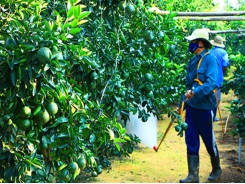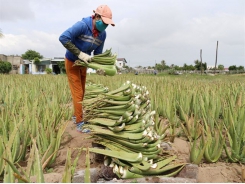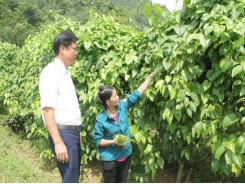Removing difficulties for coffee industry

Currently, the export price of Robusta coffee grad 2, with 5% black and broken, reached only US$1,401 per tonne at Ho Chi Minh City’s ports.
According to the Vietnam Coffee Association, the world market outlook for robusta coffee was quite gloomy in September. Currently, the export price of Robusta coffee grad 2, with 5% black and broken, reached only US$1,401 per tonne at Ho Chi Minh City’s ports, down 0.8% over the end of August.
The above price is a big loss for both coffee growers and traders in Vietnam, where Robusta accounts for over 90% of the export volume of the coffee industry. Economic experts said that, in addition to objective reasons due to production, the record increase in the output from the world's biggest coffee producer, Brazil, was one of main causes putting pressure on the price of Vietnamese coffee.
Currently, the Robusta coffee growing area accounts for nearly 94% of coffee areas in the country and many areas are old and stunted and have poor quality and yield. The Arabica coffee area is around 40,000 hectares, mainly old varieties with low productivity and quality.
The re-cultivation of coffee trees has not been developed in these localities and the processing technology is backward, affecting the products’ quality. As a consequence, Vietnam’s export coffee price was much lower than other countries. For example, in the US market, the average coffee price from Vietnam was only US$1.9 per kilogramme, meanwhile the coffee from Brazil, Columbia and Guatemala were priced at US$2.8 per kilogramme, US$3.5 per kilogramme and US$4 per kilogramme, respectively.
It is forecast that the global coffee output in the 2018-209 crop will increase by 7.1% compared to the 2017-2018 crop and domestic coffee production is expected to rise around 4%. Currently, the price of coffee production in the Central Highland provinces is only VND32,000 per kilogramme – the lowest in recent years.
Facing difficulties in price, in the immediate future, coffee growers should save input costs to reduce production costs and maintain orchards. Most coffee growers borrowed capital from credit institutions for their production and business. Therefore, the relevant agencies need to enhance the implementation of debt freezing and rescheduling policies, as well as reduce interest rates for farmers receiving loans.
In the long run, in order to boost the export value of coffee, farmers should strictly implement intensive farming and care methods, creating coffee products with good quality. In addition, management agencies need to focus on re-planning plantation areas, expeditiously completing the re-cultivation and building brands for the coffee industry, as well as moving from the export of raw coffee beans to deep processing and joining the global value chain.
Có thể bạn quan tâm
Phần mềm

Phối trộn thức ăn chăn nuôi

Pha dung dịch thủy canh

Định mức cho tôm ăn

Phối trộn phân bón NPK

Xác định tỷ lệ tôm sống

Chuyển đổi đơn vị phân bón

Xác định công suất sục khí

Chuyển đổi đơn vị tôm

Tính diện tích nhà kính

Tính thể tích ao hồ



 Technology adds value to farm produce
Technology adds value to farm produce  The Head of the hamlet persists in bringing…
The Head of the hamlet persists in bringing…